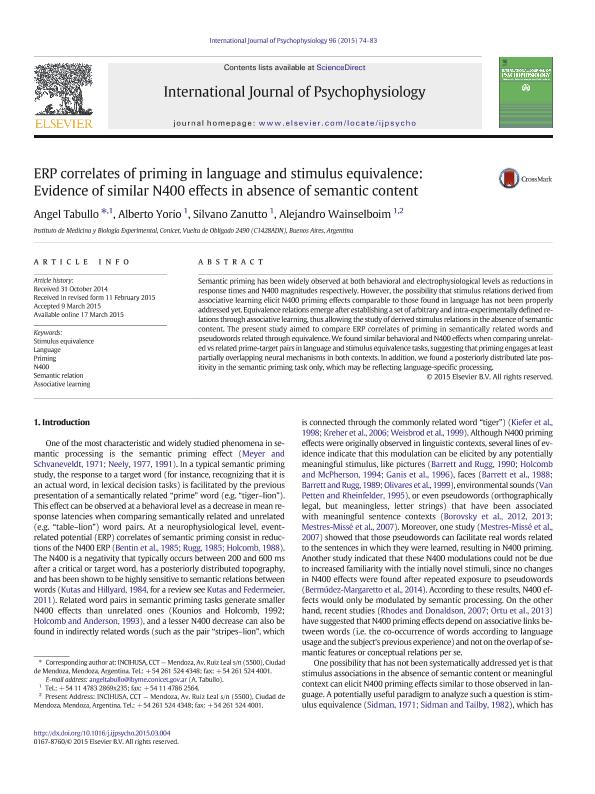Artículo
ERP correlates of priming in language and stimulus equivalence: Evidence of similar N400 effects in absence of semantic content
Fecha de publicación:
05/2015
Editorial:
Elsevier Science
Revista:
International Journal Of Psychophysiology
ISSN:
0167-8760
Idioma:
Inglés
Tipo de recurso:
Artículo publicado
Clasificación temática:
Resumen
Semantic priming has been widely observed at both behavioral and electrophysiological levels as reductions in response times and N400 magnitudes respectively. However, the possibility that stimulus relations derived from associative learning elicit N400 priming effects comparable to those found in language has not been properly addressed yet. Equivalence relations emerge after establishing a set of arbitrary and intra-experimentally defined relations through associative learning, thus allowing the study of derived stimulus relations in the absence of semantic content. The present study aimed to compare ERP correlates of priming in semantically related words and pseudowords related through equivalence. We found similar behavioral and N400 effects when comparing unrelated vs related prime-target pairs in language and stimulus equivalence tasks, suggesting that priming engages at least partially overlapping neural mechanisms in both contexts. In addition, we found a posteriorly distributed late positivity in the semantic priming task only, which may be reflecting language-specific processing.
Archivos asociados
Licencia
Identificadores
Colecciones
Articulos(IBYME)
Articulos de INST.DE BIOLOGIA Y MEDICINA EXPERIMENTAL (I)
Articulos de INST.DE BIOLOGIA Y MEDICINA EXPERIMENTAL (I)
Articulos(INCIHUSA)
Articulos de INST. DE CS. HUMANAS, SOC. Y AMBIENTALES
Articulos de INST. DE CS. HUMANAS, SOC. Y AMBIENTALES
Citación
Tabullo, Angel Javier; Yorio, Alberto; Zanutto, Bonifacio Silvano; Wainselboim, Alejandro Javier; ERP correlates of priming in language and stimulus equivalence: Evidence of similar N400 effects in absence of semantic content; Elsevier Science; International Journal Of Psychophysiology; 96; 2; 5-2015; 74-83
Compartir
Altmétricas




